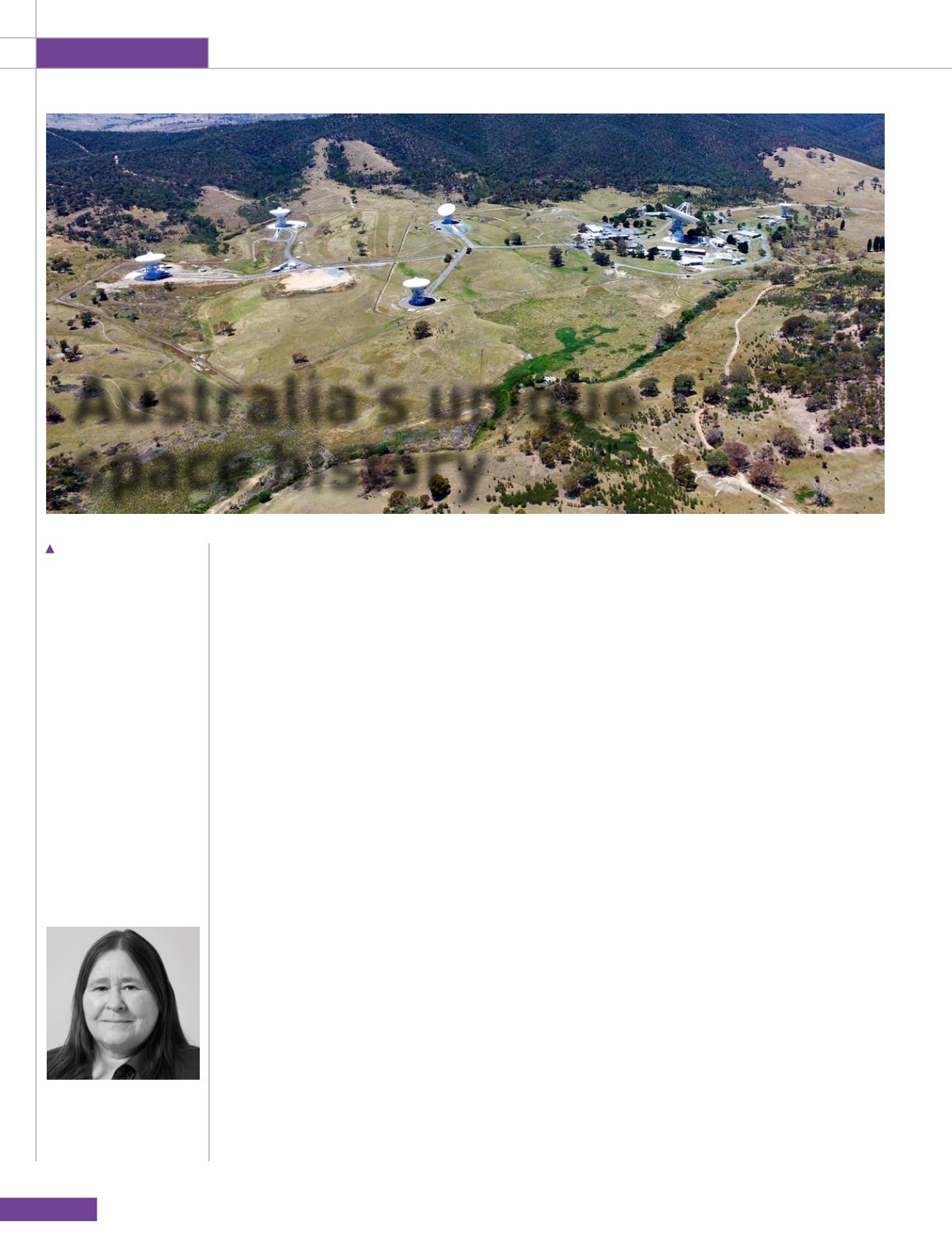
ROOM
98
Space Lounge
While Australia is not currently considered a significant spacefaring nation, it
has a long history of space activities stretching back to the beginnings of the
Space Age - and South Australia was the original home of those activities. For
anyone planning to attend the 2017 International Astronautical Congress (IAC)
in Adelaide this September and spend some extra time in the country, there are
several space sites and museums that offer an insight into Australia’s space
history. Here’s our specialist guide to help you plan and make the most of your
time at the IAC in Australia and learn something of its unique space history.
Port Adelaide
Right on the doorstep of the International
Astronautical Congress, the South Australian
Aviation Museum (SAAM) at Port Adelaide offers
a small display of British and Australian sounding
rockets launched at Woomera, together with a
good collection of civil and military aircraft, many
with specific South Australian connections, and
aviation memorabilia. Easily reached by public
transport, the SAAM is part of a heritage precinct
that also includes the National Railway Museum
and the South Australian Maritime Museum. www.
saam.org.au/
Woomera, South Australia
Established in 1947 to test British long-range missiles
and other weapons, Woomera Rocket Range was also
the hub of space activities in Australia from the 1950s
to 1980. Several significant programmes were carried
out there, commencing with the British Skylark and
Australian sounding rocket programmes in 1957.
Britain’s Black Knight research missile was used
1958 - 1965 for a range of defence research projects
focussed on upper atmosphere studies: additional
research was carried out under Project SPARTA
in 1966 - 67 using American Redstone rockets.
From 1964 - 1970, ELDO, the European Launcher
Development Organisation (a precursor of the
European Space Agency) conducted its Europa
launch vehicle programme, the largest space project
undertaken at Woomera.
Although ELDO never managed to launch a
satellite during this programme, Australia’s first
satellite WRESAT (celebrating its 50th anniversary
this year) was launched fromWoomera in 1967, and
the last launch of Britain’s Black Arrow programme,
active 1969 - 1971, lofted Prospero, the second
satellite to achieve orbit fromWoomera.
Woomera was also the home of space tracking
facilities initially established in conjunction with the
International Geophysical Year (IGY). Transferred to
NASA on its creation, these facilities were moved in
Australia’s unique
space history
Kerrie Dougherty
Independent curator
and space historian,
Australia
The Canberra Deep
Space Communication
Complex has played a
crucial role in planetary
exploration since 1965.
NASA/CSIRO


